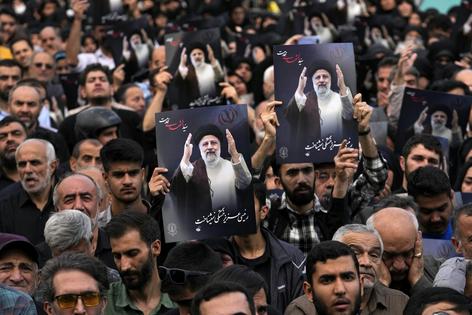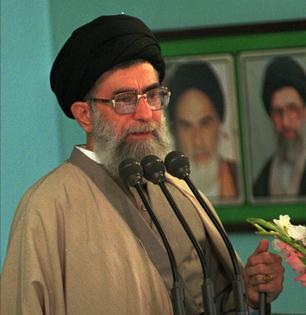How Iran selects its supreme leader − a political scientist and Iran expert explains
Published in News & Features
The sudden death of President Ebrahim Raisi is unlikely to drastically alter Iran’s foreign and domestic policies, but it has left a power vacuum.
As stipulated by the constitution, Raisi was replaced by his first vice president, Mohammad Mokhber, as interim president before presidential elections are held in 50 days. That said, Raisi was supposedly being groomed to succeed an aging Ali Khamenei as the supreme leader, the Islamic Republic’s ultimate power broker and decision-maker.
The Iranian supreme leader serves for life and is the highest religious and political authority in the Islamic Republic. He is the commander in chief of the armed forces and oversees other key institutions such as the judicial branch and state media. He also supervises the Guardian Council, which has the power to vet electoral candidates and veto parliamentary legislation. In this capacity, the supreme leader has the final say on foreign policy and different areas of domestic policy.
As a scholar of Iran’s domestic politics and foreign policy, I have studied the process of who succeeds or gets elected to the position. This process has evolved during the Islamic Republic’s nearly 50-year history and is more a function of politics than religion.
Since the Iranian Revolution of 1979, there have been two supreme leaders – Ayatollah Ruhollah Khomeini, who ruled between 1979-1989, and Ayatollah Ali Khamenei, who succeeded him.
In addition to being a revolutionary and charismatic leader, Khomeini was a grand ayatollah and source of emulation, or “marja’ al-taqlid.” A grand ayatollah is among a select few of the highest-ranking clerics, considered a “sign of God,” in Twelver Shiism, the largest branch of Shiism and the state religion of Iran. These clerics have the authority to make legal decisions for their lay followers and for lower-ranking clerics.
While Khomeini came into power as a religious cleric and revolutionary leader in February 1979, it was not until the Islamic Constitution was approved through a referendum in December of that year that the position or office of supreme leader was officially established. It was inspired by Khomeini’s concept of the Guardianship of the Jurist, or the idea that a senior cleric should supervise the state in accordance with Islamic law.
In 1982-83, when Khomeini was the supreme leader and Khamenei was the third president, the position or office fell under the purview of the Assembly of Experts, as enshrined in articles 107 and 111 of the constitution.
The Assembly of Experts is a body that comprises over 80 members who serve eight-year terms and are authorized to elect, supervise and, if necessary, dismiss the supreme leader. Although the members are elected by a popular vote, they are first vetted by the Guardian Council, much like presidential and parliamentary candidates.
It should be noted that the members of the Guardian Council are appointed by the supreme leader and the chief justice, or head of the judiciary, who is also appointed by the supreme leader. Therefore, through the council, the supreme leader approves the candidates, who are potentially elected to a body that oversees him, making the process far from free and fair.
...continued











Comments